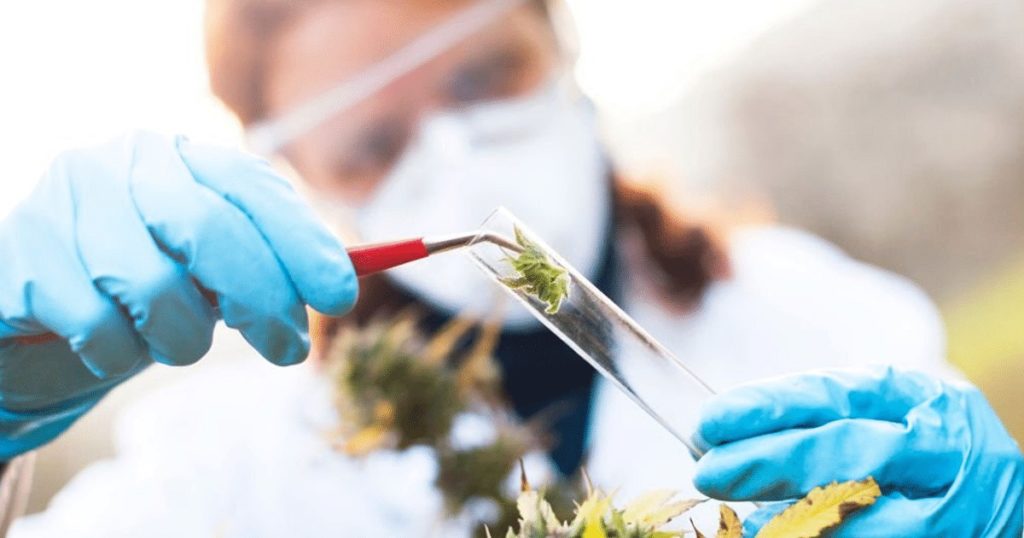The National Institute on Drug Abuse (NIDA) is seeking research partners in the “acquisition and/or production of cannabis and related materials.” Until now, the Drug Enforcement Administration (DEA) had licensed just one direct supplier to NIDA. The change will allow the organization to collaborate with leaders in the industry to conduct expert research in the cannabis industry and push the bounds of what has been studied.
“Sources Sought”
In a notice posted by NIDA on May 20th, the organization announced that it was seeking “capability statements” from licensed facilities that have permissions to grow granted by the DEA.
For five decades, only one grow facility at the University of Mississippi has been licensed to cultivate marijuana for purposes of research. While many companies have been sent conditional acceptances throughout the month of May, Groff North America Hemplex and the Biopharmaceutical Research Company (BRC) have been granted official acceptance by the DEA and have begun growing at the research level.
Although it is unclear how many suppliers NIDA plans to collaborate with, the agency outlined the essential requirements for a potential partnership as well as their responsibilities.
According to NIDA, interested parties must be able to “produce or procure cannabis, cannabis extract, and other cannabis-derived materials for basic and clinical research, as well as to conduct quantitative and qualitative analysis, stability determination, and recommended storage conditions for these products for approved research.”
Beyond CBD & THC
In the notice, it was specified that potential partners must have the technologies to isolate THC and other compounds within the marijuana plant. Further, it would be their responsibility to “obtain cannabis extract of known potencies, manufacture marijuana cigarettes of varying potencies, and provide purified materials and marijuana cigarettes for research.”
While a vast majority of research conducted over the years has primarily focused on the two primary cannabinoids within the marijuana plant, NIDA has made it clear that they wish to focus their research beyond that scope and to study extractions such as CBN, CBC, & CBG.
In layman’s terms, CBN can be understood as a 25% less potent version of THC. Conversely to CBD which has no psychoactive properties, CBN in large enough doses can lead to mild psychoactive effects.
According to Leafly, “while CBC definitely has singular benefits, researchers also think that it seems to synergistically work with other cannabinoids – a term known as the entourage effect. This effect of THC and CBD working together is well-known, but whether other cannabinoids have entourage effects is not well understood.”
Similar to CBD, CBG has newly been used to treat anxiety and pain, without producing the effects of feeling “high.” In recent studies, CBG has also shown promising results in regard to the treatment and alleviation of inflammatory symptoms caused by a number of diseases.
Impeded Research
Prior to this step forward in the research, experts have advocated for the diversification of research sites. The exclusivity of the singular research site at the Univerity of Mississippi has previously created an unfortunately small & limited sample. Studies have routinely shown that the cannabis grown at that particular site often resembles hemp, and not cannabis, resulting in limited and often skewed results.
Furthermore, the classification of marijuana as a Schedule I (highly addictive) substance by the Controlled Substances Act is a restrictive definition, which often dissuades researchers from investing time and resources into cannabis research.
It is undeniable that the move by the DEA to connect with more partners is a move forward in the cannabis research sector. Collaborating with diversified partners will allow for the study of more factors, and for the lowering of certain biases and skews.
Although THC and CBD have been at the forefront of research initiatives for many years, there is much to be learned with regard to other cannabinoids found within the marijuana plant, including CBN, CBC, & CBG.
Nevertheless, the continued classification of Marijuana as a Schedule I substance continues to impose limitations on the potential for valuable research.
Enjoyed that first hit? Come chill with us every week at the Friday Sesh for a freshly packed bowl of the week’s best cannabis news!

















